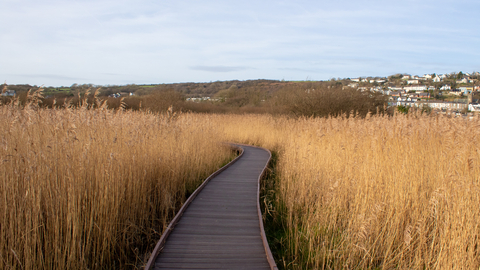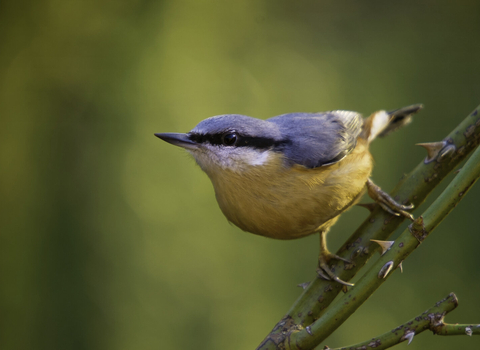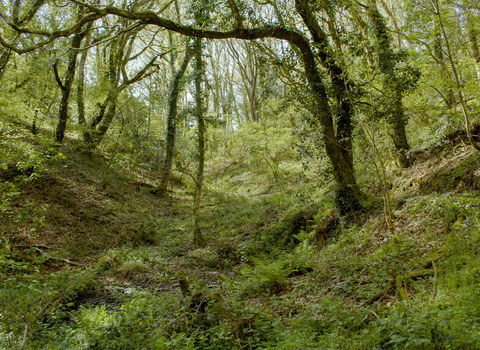
Goodwick Moor © Grace Hunt
Goodwick Moor
Location
Know before you go
Dogs
When to visit
Amseroedd agor
Open access reserve.Amser gorau i ymweld
Spring and SummerAm dan y warchodfa
The reserve lies between two streams, which combine at its north east corner. Water levels are at their highest from October to April and the entire moor can often be flooded when spring tides coincide with heavy rain.
The extensive reedbed covers much of the reserve, with Sea Rush and Sea Aster being well represented at the seaward side. Species of interest on the flood plain mire include Common Cotton Sedge and Royal Fern. In the drier area, Willow and Alder carr woodland is prominent, with Bog Myrtle occurring where Willow has been cut back. The ditches include Glaucous Bulrush, Bogbean, Branched Burr Reed, Water Mint and Bog Pondweed.
The reed bed and fringe support Sedge and Reed Warblers, whilst the low scrub and carr wood support Stonechats and Willow Warblers. Swallows roost and Snipe and Siskins overwinter here. Buzzard, Kestrel and Sparrowhawk are also present. Cetti’s Warbler and Bittern have also been recorded as winter visitors.
Invertebrates including moths, dragonflies, damselflies and butteflies are fairly well represented and include Comma, Painted Lady and Ringlet. Otters and Water Vole are notable mammals present on this reserve.
After a 6 year closure, Goodwick Moor Nature Reserve has reopened showcasing a new 500m long boardwalk and new wildlife pond. Read more about the new boardwalk here.



